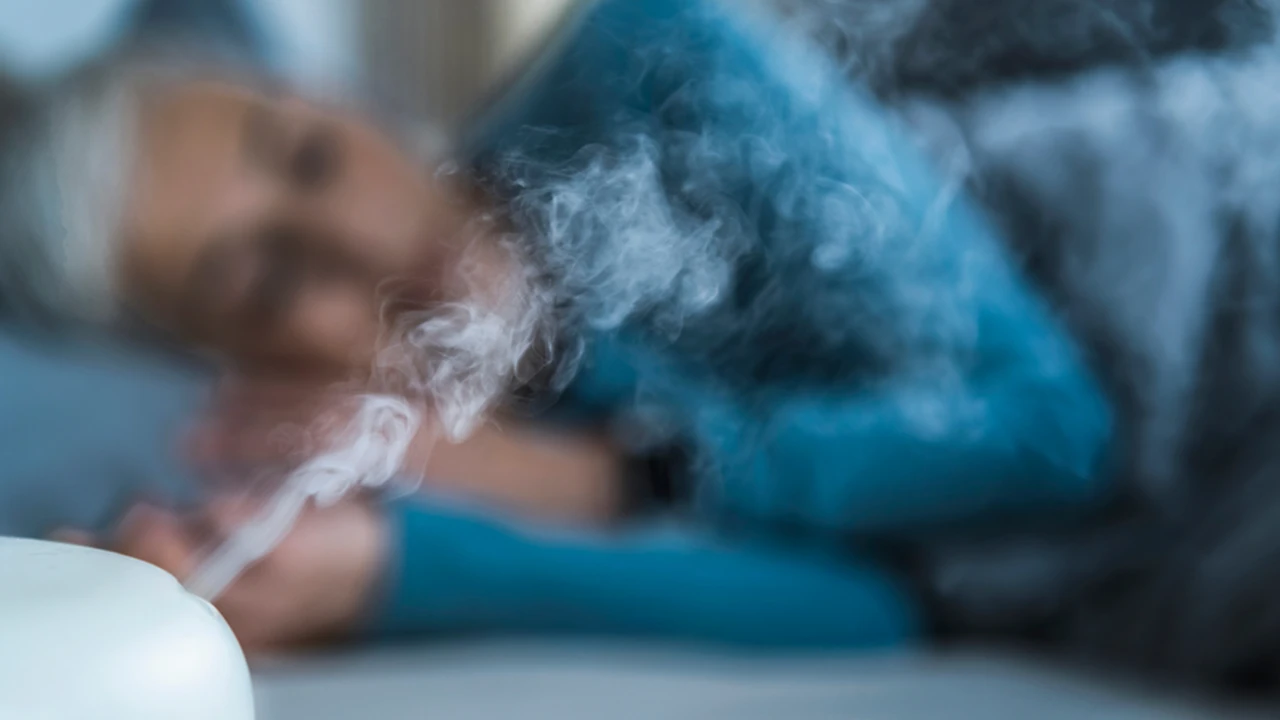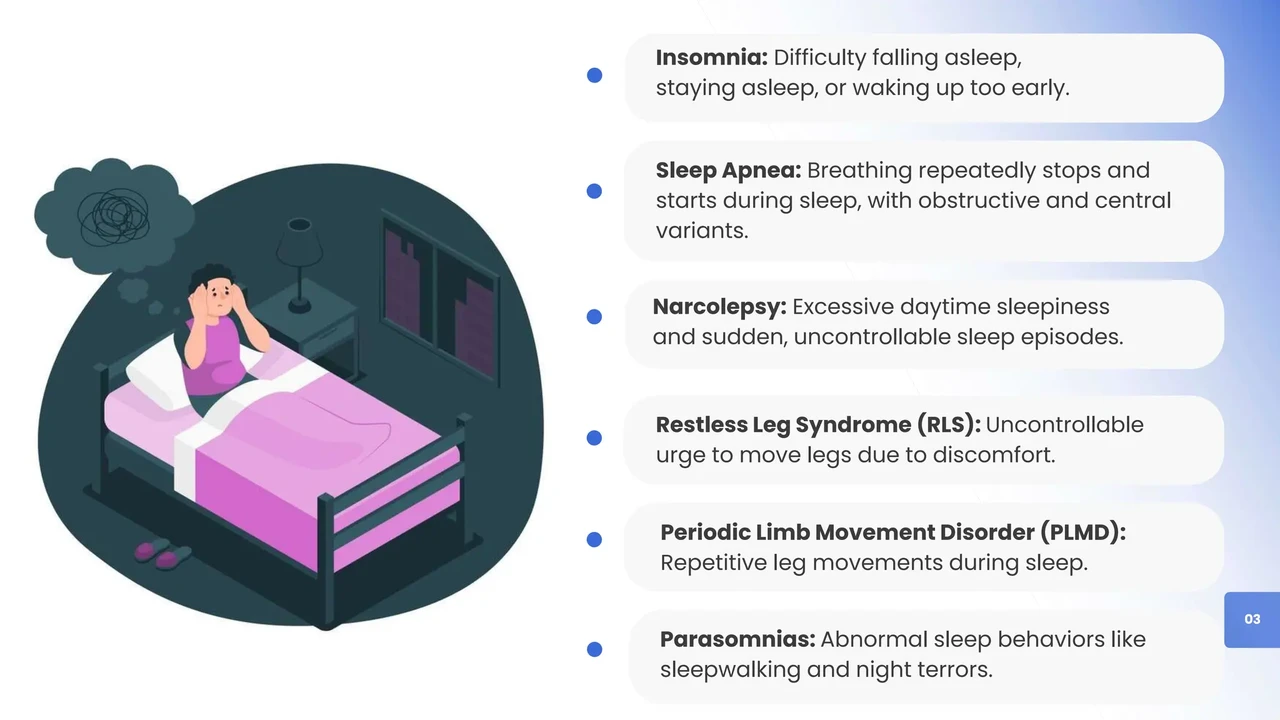Air Quality and Your Sleep Health
Understand the impact of indoor air quality on your sleep. Improve ventilation and air purity for healthier rest.

Air Quality and Your Sleep Health Your Ultimate Guide
Hey there, ever thought about what you're breathing in while you're catching those Zs? It might sound a bit out there, but the air quality in your bedroom can seriously mess with your sleep. We're talking about everything from how quickly you fall asleep to how deep and restorative your sleep actually is. It's not just about comfort; it's about your health, your energy levels, and even your mood the next day. Let's dive deep into why indoor air quality is such a big deal for your sleep and what you can do to make your bedroom a haven of fresh, clean air.
Why Indoor Air Quality Matters for Sleep The Unseen Impact
So, why is the air in your bedroom so important? Think about it: you spend roughly a third of your life in bed. That's a lot of time breathing in whatever's floating around in your room. Poor indoor air quality can introduce a whole host of issues that directly impact your sleep. We're talking about allergens, pollutants, and even just stale air that can make it harder to breathe comfortably.
Common Indoor Air Pollutants Affecting Sleep
Let's break down some of the usual suspects. First up, allergens. Dust mites, pet dander, pollen (that sneaks in from outside), and mold spores are tiny invaders that can trigger allergic reactions. When your nose is stuffy, your throat is scratchy, or you're constantly sneezing, getting to sleep and staying asleep becomes a real challenge. Your body is busy fighting off these irritants instead of relaxing into a deep slumber.
Then there are volatile organic compounds, or VOCs. These are gases emitted from certain solids or liquids, and they're found in a surprising number of household items. Think paints, cleaning supplies, furniture, carpets, and even some personal care products. That 'new car smell' or 'new furniture smell' you might like? That's often VOCs. Breathing these in, especially in an enclosed space like a bedroom, can lead to respiratory irritation, headaches, and general discomfort, all of which are terrible for sleep.
Beyond that, carbon dioxide (CO2) levels can build up in a poorly ventilated room. As you breathe, you exhale CO2. In a small, sealed room, these levels can rise, leading to feelings of stuffiness, drowsiness (the wrong kind of drowsiness!), and even headaches. While it might seem counterintuitive, high CO2 can actually make your sleep less refreshing, leaving you feeling groggy even after a full night.
And let's not forget about particulate matter. These are tiny solid or liquid particles suspended in the air, like dust, smoke (even from cooking in another room), and pollution from outside. Inhaling these can irritate your lungs and airways, making breathing difficult and potentially leading to coughing or wheezing during the night.
Signs of Poor Bedroom Air Quality Impacting Your Sleep
How do you know if your bedroom air is the culprit behind your restless nights? There are a few tell-tale signs. If you frequently wake up with a dry throat, stuffy nose, or itchy eyes, it could be allergens or dry air. Persistent coughing or sneezing, especially at night or first thing in the morning, is another red flag. Headaches or a general feeling of sluggishness even after what you thought was enough sleep can also point to poor air quality, particularly elevated CO2 levels or VOC exposure.
Sometimes, it's just a general feeling of stuffiness or a lingering unpleasant odor in your bedroom that doesn't seem to go away, even after cleaning. If you notice these symptoms, it's definitely time to consider improving your indoor air quality.
Strategies for Improving Bedroom Air Purity and Ventilation
Alright, so you're convinced your air needs an upgrade. What can you actually do? Plenty! It's about a multi-pronged approach: reducing pollutants, improving ventilation, and actively purifying the air.
Ventilation is Key Fresh Air Flow
The simplest and often most effective step is to ventilate. Open your windows for at least 10-15 minutes a day, even in winter. Cross-ventilation, where you open windows on opposite sides of the room or house, is even better for flushing out stale air and bringing in fresh air. If you have an exhaust fan in your bathroom or kitchen, use it, as these can help pull air out of your home, reducing humidity and odors.
Consider using a fan to circulate air within your bedroom. While it doesn't bring in fresh air, it can prevent CO2 from building up in a stagnant pocket around your bed and can help distribute purified air if you're using an air purifier.
Reducing Indoor Pollutants Your First Line of Defense
This is about prevention. First, regular cleaning is crucial. Dust surfaces, vacuum carpets and rugs (which can trap allergens and dust), and wash bedding frequently in hot water to kill dust mites. If you have pets, try to keep them out of the bedroom, or at least off the bed, to minimize dander.
Be mindful of the products you bring into your home. Opt for low-VOC paints, furniture, and cleaning supplies. Look for certifications like GreenGuard or GREENGUARD Gold when buying new furniture or flooring. Avoid using strong chemical air fresheners or scented candles, as these can release VOCs and other irritants. Natural alternatives like essential oil diffusers (with pure essential oils, not synthetic fragrances) can be a better choice, but even then, use them sparingly.
Control humidity. High humidity can lead to mold growth, which is a major allergen. Aim for indoor humidity levels between 30-50%. A dehumidifier can help if you live in a humid climate, especially in basements or bathrooms.
Air Purifiers Your Bedroom's Best Friend
This is where technology comes in to actively clean your air. An air purifier can be a game-changer, especially if you suffer from allergies, live in an urban area with outdoor pollution, or just want that extra layer of clean air. But not all air purifiers are created equal. You want one with a true HEPA filter, which can capture 99.97% of airborne particles as small as 0.3 microns, including dust mites, pet dander, pollen, and mold spores. For odors and VOCs, you'll also want an activated carbon filter.
Top Air Purifier Recommendations for Sleep Optimization
When choosing an air purifier for your bedroom, consider the room size (CADR rating is important here – Clean Air Delivery Rate), noise level (you want it quiet for sleep!), and filter replacement costs. Here are a few top picks that are great for bedrooms:
1. Coway Airmega 200M The Quiet Performer
Description: This is a perennial favorite for a reason. The Coway Airmega 200M (or its predecessor, the Mighty AP-1512HH) is incredibly effective for its size and price point. It features a four-stage filtration system: pre-filter, activated carbon filter, true HEPA filter, and a vital ionizer (which you can turn off if you prefer). It's known for being remarkably quiet, especially on its lower settings, making it perfect for a bedroom.
Use Cases: Ideal for medium-sized bedrooms (up to 361 sq ft CADR). Excellent for allergy sufferers, pet owners, and anyone looking to reduce dust and odors. Its auto mode adjusts fan speed based on air quality, which is super convenient.
Pros: Very quiet, effective filtration, good value, sleek design, auto mode. Filters are reasonably priced and last a good while.
Cons: The ionizer can produce a tiny amount of ozone, though it's generally considered safe and can be disabled. Some users find the indicator lights a bit bright, but they can often be dimmed or covered.
Estimated Price: $180 - $250 USD
2. Levoit Core 300 The Compact Powerhouse
Description: The Levoit Core 300 is a fantastic option if you're looking for something compact, affordable, and effective for smaller bedrooms. It uses a 3-in-1 filtration system: pre-filter, true HEPA filter, and activated carbon filter. It's cylindrical, pulling air in from all directions, which is efficient. It's also very quiet on its lowest setting.
Use Cases: Best for small to medium bedrooms (up to 219 sq ft CADR). Great for dorm rooms, nurseries, or guest rooms. Perfect for basic dust, allergen, and odor removal.
Pros: Very affordable, compact, quiet, effective for its size, easy to use. Filters are inexpensive.
Cons: Not suitable for very large rooms. Filters need to be replaced every 6-8 months, which is fairly standard.
Estimated Price: $90 - $120 USD
3. Blueair Blue Pure 211+ Auto The Stylish Workhorse
Description: Blueair is known for its stylish designs and effective filtration. The Blue Pure 211+ Auto uses a combination of electrostatic and mechanical filtration (HEPA Silent technology) to capture particles. It has a washable pre-filter that comes in different colors, allowing you to match your decor. The 'Auto' version includes a particle sensor that adjusts fan speed automatically.
Use Cases: Excellent for larger bedrooms or open-plan living spaces (up to 540 sq ft CADR). Ideal for those who prioritize both performance and aesthetics. Great for general air purification, allergens, and smoke.
Pros: Very high CADR for its price, quiet for its power, stylish design with customizable pre-filters, energy-efficient, auto mode.
Cons: Filters are a bit pricier than some competitors, though they last a long time. It's a larger unit, so consider space.
Estimated Price: $250 - $300 USD
4. Dyson Purifier Cool Formaldehyde TP09 The Premium All-in-One
Description: If you're looking for a premium, multi-functional device, Dyson offers air purification along with cooling (and heating in some models). The TP09 specifically detects and destroys formaldehyde, a particularly nasty VOC. It uses a sealed HEPA and activated carbon filter system. It's also a smart device, connecting to an app for detailed air quality reports and remote control.
Use Cases: For those who want top-tier air purification, precise air quality monitoring, and a cooling fan in one unit. Ideal for tech enthusiasts and those concerned about a wide range of pollutants, including formaldehyde from new furniture or building materials.
Pros: Excellent filtration, formaldehyde detection and destruction, multi-functional (purifier + fan), smart features, sleek design, quiet for its power.
Cons: Very expensive. Filters are also pricey. While it cools, it's not an air conditioner, so don't expect drastic temperature drops.
Estimated Price: $700 - $800 USD
5. Winix 5500-2 The PlasmaWave Option
Description: The Winix 5500-2 is another popular choice, often compared to the Coway Mighty. It features a true HEPA filter, an activated carbon filter, and Winix's PlasmaWave technology, which is an ionizer that breaks down pollutants at a molecular level. Like the Coway, the PlasmaWave can be turned off if you prefer not to use it.
Use Cases: Great for medium to large rooms (up to 360 sq ft CADR). Effective for pet owners, allergy sufferers, and general air purification. Good for tackling odors.
Pros: Effective filtration, good value, auto mode, quiet on lower settings, washable pre-filter. Filters are reasonably priced.
Cons: PlasmaWave feature can produce a tiny amount of ozone (though generally considered safe and can be disabled). Design is a bit more utilitarian than some others.
Estimated Price: $150 - $200 USD
Comparison Table for Air Purifiers
| Feature | Coway Airmega 200M | Levoit Core 300 | Blueair Blue Pure 211+ Auto | Dyson Purifier Cool Formaldehyde TP09 | Winix 5500-2 |
|---|---|---|---|---|---|
| CADR (Smoke) | 246 sq ft | 141 sq ft | 350 sq ft | Not explicitly listed, but high | 232 sq ft |
| Max Room Size (approx) | 361 sq ft | 219 sq ft | 540 sq ft | Large rooms | 360 sq ft |
| Filtration Stages | 4 (Pre, Carbon, HEPA, Ionizer) | 3 (Pre, HEPA, Carbon) | 3 (Pre, Particle, Carbon) | HEPA, Carbon, Catalytic | 4 (Pre, Carbon, HEPA, PlasmaWave) |
| Noise Level (Min dB) | 24.4 dB | 24 dB | 23 dB | 46 dB (max) | 27.8 dB |
| Smart Features | Auto Mode | None | Auto Mode | App Control, Auto Mode | Auto Mode |
| Special Features | Eco Mode, Air Quality Sensor | 360° intake | Washable Pre-filter, HEPA Silent | Formaldehyde destruction, Fan | PlasmaWave (optional) |
| Estimated Price Range | $180 - $250 | $90 - $120 | $250 - $300 | $700 - $800 | $150 - $200 |
Other Air Quality Enhancers for Your Sleep Sanctuary
Beyond air purifiers, there are other tools and habits that can contribute to better bedroom air.
Houseplants The Natural Air Filters
Certain houseplants are known for their air-purifying qualities. While they won't replace a good air purifier, they can certainly help. Plants like Snake Plants (Sansevieria trifasciata), Peace Lilies (Spathiphyllum), and Spider Plants (Chlorophytum comosum) are great at absorbing some common indoor air pollutants and releasing oxygen. Plus, they add a touch of nature and calm to your bedroom, which is always a bonus for sleep.
Humidity Control The Right Balance
As mentioned, humidity plays a role. If your air is too dry, it can irritate your nasal passages and throat, leading to discomfort and even nosebleeds. A humidifier can add moisture to the air, making breathing more comfortable, especially in dry climates or during winter when heating systems dry out the air. Just be sure to clean your humidifier regularly to prevent mold and bacteria growth. Conversely, if your bedroom is too humid, a dehumidifier can prevent mold and dust mites from thriving.
Regular Cleaning and Maintenance Your Ongoing Commitment
This can't be stressed enough. Dusting with a damp cloth, vacuuming with a HEPA-filtered vacuum cleaner, and washing bedding weekly are fundamental. Don't forget to clean curtains, blinds, and even walls periodically, as these can accumulate dust and allergens. If you have forced-air heating or cooling, change your HVAC filters regularly (every 1-3 months, depending on usage and filter type) to prevent dust and allergens from circulating throughout your home.
Putting It All Together for Your Best Sleep
Improving your bedroom air quality isn't just about buying a gadget; it's about creating a holistic environment that supports healthy sleep. Start with the basics: ventilate daily, reduce sources of pollution, and clean regularly. Then, consider adding an air purifier that suits your room size and needs. Pay attention to humidity levels and maybe even introduce some air-purifying plants.
The goal is to make your bedroom a sanctuary where you can breathe easy, literally. When your body isn't fighting off allergens or struggling with stale air, it can truly relax and enter those deep, restorative sleep stages. You'll wake up feeling more refreshed, energized, and ready to tackle the day. So, take a deep breath, and start making those changes for better sleep and better health!
:max_bytes(150000):strip_icc()/277019-baked-pork-chops-with-cream-of-mushroom-soup-DDMFS-beauty-4x3-BG-7505-5762b731cf30447d9cbbbbbf387beafa.jpg)





